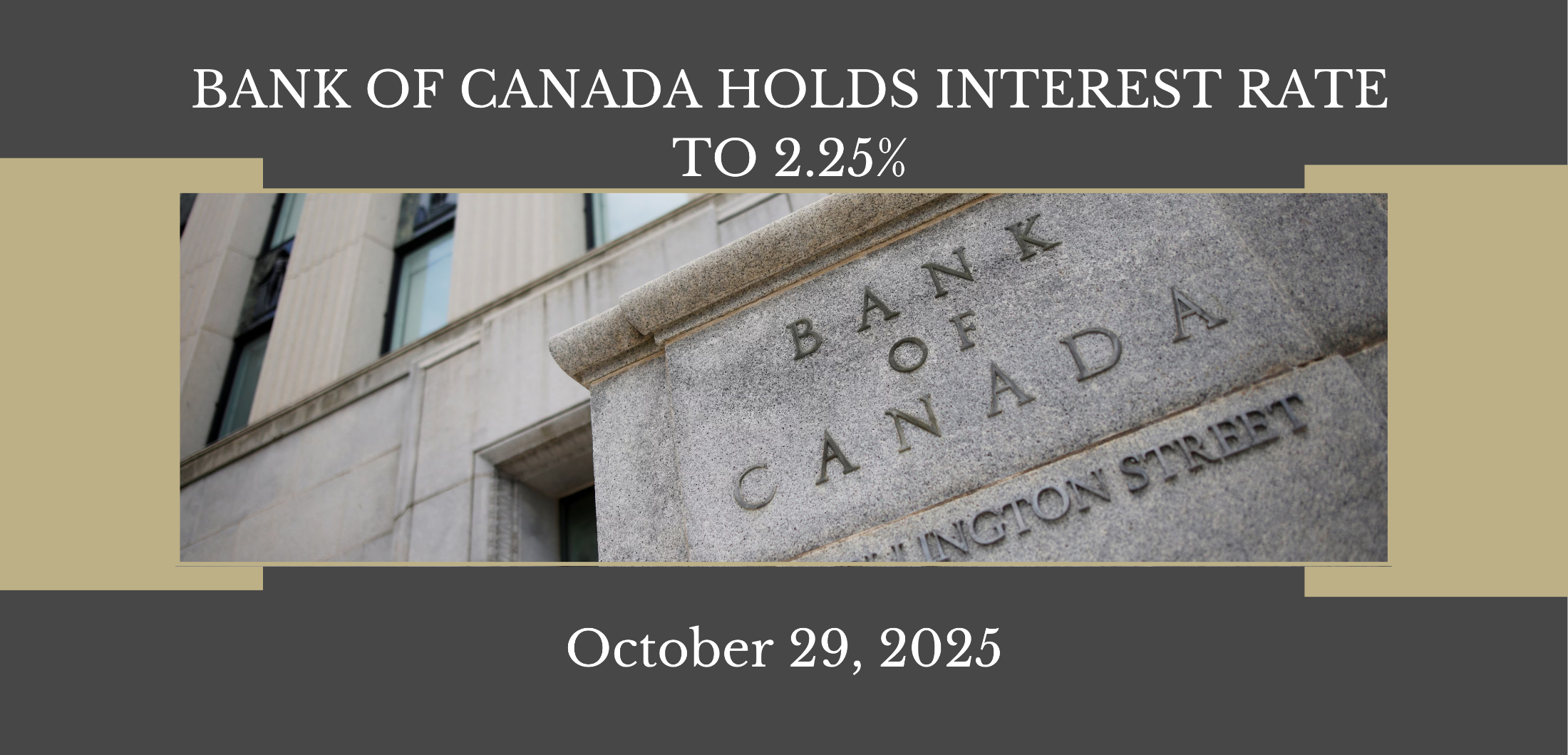The Bank of Canada today reduced its target for the overnight rate by 25 basis points to 2.25%, with the Bank Rate at 2.5% and the deposit rate at 2.20%.
With the effects of U.S. trade actions on global economic growth and inflation now somewhat clearer, the Bank has returned to its standard practice of providing a full projection for both the global and Canadian economies in its latest Monetary Policy Report (MPR). However, the Bank notes that “because U.S. trade policy remains unpredictable and uncertainty is still higher than normal, this projection is subject to a wider-than-usual range of risks.”
Globally, the economy has proven resilient in the face of historic U.S. tariff increases, but the impact is becoming more evident. Trade relationships are being reconfigured, and ongoing trade tensions are dampening investment across many countries. According to the MPR, global economic growth is projected to slow from approximately 3¼% in 2025 to around 3% in 2026 and 2027.
In the United States, economic activity remains strong—supported by a boom in AI investment—though employment growth has slowed and tariffs have begun to raise consumer prices. Growth in the euro area is decelerating, driven by weaker exports and slowing domestic demand. Meanwhile, in China, lower exports to the U.S. have been partially offset by stronger exports to other markets, but business investment has weakened.
Global financial conditions have eased since July, oil prices have remained relatively stable, and the Canadian dollar has depreciated slightly against the U.S. dollar.
Domestically, Canada’s economy contracted by 1.6% in the second quarter, reflecting reduced exports and weak business investment amid heightened uncertainty. Household spending, however, continued to grow at a healthy pace. U.S. trade actions and related uncertainty are having a significant impact on targeted Canadian sectors, including autos, steel, aluminum, and lumber. As a result, GDP growth is expected to remain weak in the second half of the year. The Bank anticipates modest support from rising consumer and government spending and residential investment, with growth expected to gradually strengthen as exports and business investment recover.
Labour market conditions remain soft. Employment gains in September followed two months of sizeable losses, while job cuts continue in trade-sensitive sectors. Hiring has been weak across much of the economy, with the unemployment rate holding at 7.1% in September and wage growth slowing. Slower population growth also means fewer new jobs are required to maintain a stable employment rate.
The Bank projects GDP growth of 1.2% in 2025, 1.1% in 2026, and 1.6% in 2027. On a quarterly basis, growth is expected to strengthen in 2026 after a weaker second half of 2025. Excess capacity in the economy is expected to persist and be gradually absorbed over the projection horizon.
Inflationary pressures remain contained. CPI inflation measured 2.4% in September, slightly above the Bank’s previous expectations, while inflation excluding taxes was 2.9%. The Bank’s preferred measures of core inflation remain sticky around 3%. Broader indicators, including alternative core measures and the distribution of price changes across CPI components, suggest underlying inflation is holding near 2½%. The Bank expects inflationary pressures to ease in the coming months, with CPI inflation remaining near 2% through the forecast horizon.
With “ongoing weakness in the economy and inflation expected to remain close to the 2% target,” the Governing Council decided to cut the policy rate by 25 basis points. The Bank noted that “if inflation and economic activity evolve broadly in line with the October projection, Governing Council sees the current policy rate at about the right level to keep inflation close to 2% while helping the economy through this period of structural adjustment.”
“If the outlook changes,” the Bank added, “we are prepared to respond. Governing Council will be assessing incoming data carefully relative to the Bank’s forecast.”
Looking ahead, the Bank emphasized that the Canadian economy faces a challenging transition. The structural damage caused by the ongoing trade conflict has reduced the economy’s capacity and increased costs, limiting the ability of monetary policy to stimulate demand while maintaining low inflation.
In closing, the Bank reaffirmed its commitment to stability, stating that it “is focused on ensuring that Canadians continue to have confidence in price stability through this period of global upheaval.”
Source: bankofcanada.ca




.png)
